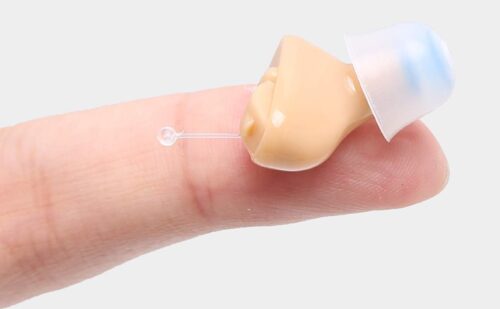Bony Ozempic faces, chemo in the afternoon, out-Theranosing Theranos, and more
26 Jan 2023
Posted by Andrew Kantor
For real this time
A new technique can measure thousands of molecules from a single drop of blood, and potentially use that to detect health issues.
This time, though, it’s a real thing. Stanford Med researchers use a technique called “multi-omic microsampling” that’s based on good ol’ mass spectrometry. And there’s no mysterious black box involved (looking at you, Theranos) — the pin-pricked sample needs to be sent to a lab.
In a pilot study of two test subjects, the researchers were able to measure the levels of 128 proteins, 1,461 metabolites and 776 lipids from each microsample.
Next up: Testing the approach on more patients. As the lead researcher said, “The bottom line is that we can get a really deep profile of a person’s metabolic and immune health, all through the convenience of a home test.”
What d’ya know about OTC hearing aids?
Over-the-counter hearing aids are out in the wild now, and chances are consumers are already dabbling.
You, dear pharmacist, need to be ready to answer their questions!
How lucky for you that GPhA is offering a one-hour lunchtime CPE webinar with UGA professor and audiologist Alison Morrison on this very subject!
Sit in for “OTC Hearing Aids: How Pharmacists Can Support Safe Self-Care,” ask all your questions, get an hour of CE credit, and be ready to help your patients know what’s likely to work best, cut through the marketing chatter, and understand the differences between hearing aid types.

Deets:
Tuesday, February 28, 2023 Noon – 1:00 pm via Zoom
It’s a mere $20 for GPhA members (non-members are $42).
Click here for all the rest of the details and sign up today!
Lilly prepares to cash in on Mounjaro
The company is investing an additional $450 million into its North Carolina tirzepatide production facility, bringing the total to $1.7 billion for that plant alone. Sounds like confidence. Let’s hope the next story doesn’t get too much traction:
“Ozempic face”?
Apparently people are learning that weight loss has side effects, especially when it’s unnecessary. They call it “Ozempic face” — when your face starts to look gaunt and older.
“When it comes to facial aging, fat is typically more friend than foe. Weight loss may turn back your biological age, but it tends to turn your facial clock forward.”
The solution: Off to the dermatologist for filler, of course.
15-second flu update
Flu cases are dropping worldwide, but a bit slower in the north. Still, it looks like the worst of the season is over.
Of note: The 2009 H1N1 variant is now the most prevalent, pushing H3N2 into second place.
Chemo’s afternoon delight
Here’s an unexpected finding: Women with lymphoma do much better when they have their chemo in the afternoon, rather than in the morning. And by “much better” we’re talking about a huge difference in both mortality and side effects.
According to Korean researchers…
It was found that female patients who received afternoon treatment had 12.5 times reduced mortality rate (25% to 2%), while the cancer recurrence after 60 months was decreased by 2.8 times (37% to 13%). In addition, chemotherapy side effects such as neutropenia were more common in female patients who received morning treatment.
And yes, this only applies to female patients; there was no difference in efficacy for men. Go figure.
Get ready to talk to your Medicaid patients
They might need your help when continuous enrollment ends on March 31. That’s when Medicaid patients in Georgia (and other non-expansion states) will need to re-verify their eligibility or be removed from the program.
[HHS] expects 6.8 million people to lose their coverage even though they are still eligible, based on historical trends looking at paperwork and other administrative hurdles. Pre-pandemic, some states made signing up for and re-enrolling in Medicaid very difficult to keep people off the rolls.
The Long Read: Viruses and Neurodegenerative Diseases edition
Could viruses like the flu be a cause of diseases like Alzheimer’s and Parkinson’s? It’s not that simple — there’s a connection, but causation is a lot tougher to prove: “Study links viral infections to Alzheimer’s, Parkinson’s—with many caveats.”


